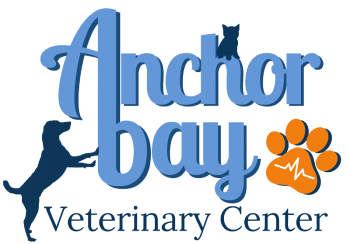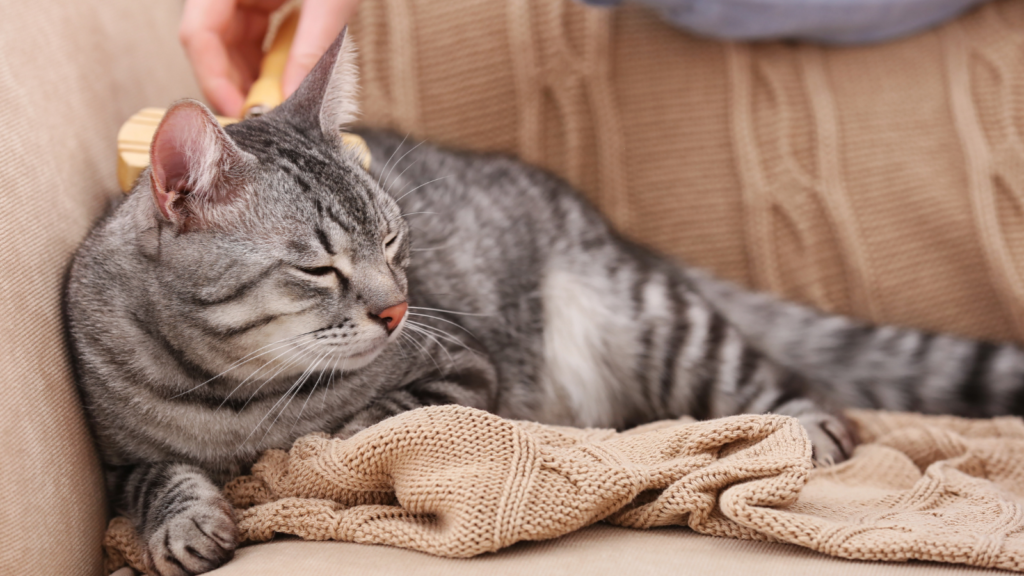Our homes are filled with products we use daily—many of which can pose a poisoning risk to pets. Everyday household items may be more dangerous than they appear, whether in the kitchen or the bathroom. March is Pet Poison Prevention Month, the ideal time to become aware of these hidden threats and take action. Anchor Bay Veterinary Center is here to help pet owners identify common household toxins and keep their furry companions safe.
Household Poisons That Threaten Pets
Pets explore with their noses and mouths, which means they are likely to investigate strong scents or dropped items. Many dangerous products smell like food or have sweet flavors (e.g., antifreeze). Items stored in low cabinets or left on counters are easily reached by curious pets. Dogs and cats may chew on bottles, tubes, or packaging that contains harmful substances.
These are some common items your pet may get into that can be toxic if ingested, inhaled, and/or absorbed through the skin:
- Cleaning Products: Bleach, toilet bowl cleaners, and ammonia can cause chemical burns or poisoning.
- Laundry Pods and Detergents: These can cause vomiting, drooling, and respiratory issues if chewed or ingested.
- Batteries: Swallowed batteries can burn the mouth and digestive tract, leading to life-threatening injuries.
- Air Fresheners: Can contain essential oils that are dangerous for pets, especially cats.
- Paints and Glues: Solvents and adhesives may cause tremors, vomiting, or neurological issues.
- Cosmetics and Personal Care Products: Toothpaste with xylitol, deodorant, and lotions can be harmful.
- Medications: Even small doses of human medications like ibuprofen or acetaminophen can be fatal to pets.
- Toxic Plants: Lilies, sago palms, and poinsettias can cause anything from mild irritation to organ failure.
- Human Foods: Chocolate, grapes, onions, garlic, and xylitol (found in sugar-free products) are common and highly toxic.
Pet owners can visit the ASCPA Animal Poison Control website for extensive lists of toxic plants, foods, and household items for cats and dogs.
Pet-Proofing Tips for Your Household
Reduce your pet’s risk by making these changes around the home. Keep all chemicals and medications in secure storage. Use high shelves (for dogs) or cabinets with childproof locks. Dispose of trash securely to avoid tempting pets with used napkins, wrappers, or food scraps. Switch to pet-safe cleaning products and/or keep your pet out of rooms where you have been cleaning. Train your pet with basic commands like “leave it” and “drop it” to prevent accidental swallowing. Monitor new items brought into your home. Be mindful of guest bags, unopened gifts, or remodeling supplies.
Responding to Pet Poisoning
If you think your pet has been exposed to a household toxin:
- Identify the substance and how much your pet has consumed or interacted with.
- Check for symptoms, including drooling, vomiting, tremors, or unusual behavior.
- Do not induce vomiting unless advised. Some chemicals and items cause more harm if vomited up.
- Contact your veterinarian for urgent pet care or call poison experts like the Pet Poison Helpline.
Make Your Home Safe for Cats and Dogs
Toxins may be hidden in plain sight throughout your home, but with awareness and prevention, you can significantly reduce the risk of accidental poisoning. March is Pet Poison Prevention Month. Anchor Bay Veterinary Center encourages you to assess and improve your household safety measures. If you have any concerns or want to talk to a veterinarian about potential toxins and live in the New Baltimore, MI area, schedule an appointment at our veterinary clinic today.

